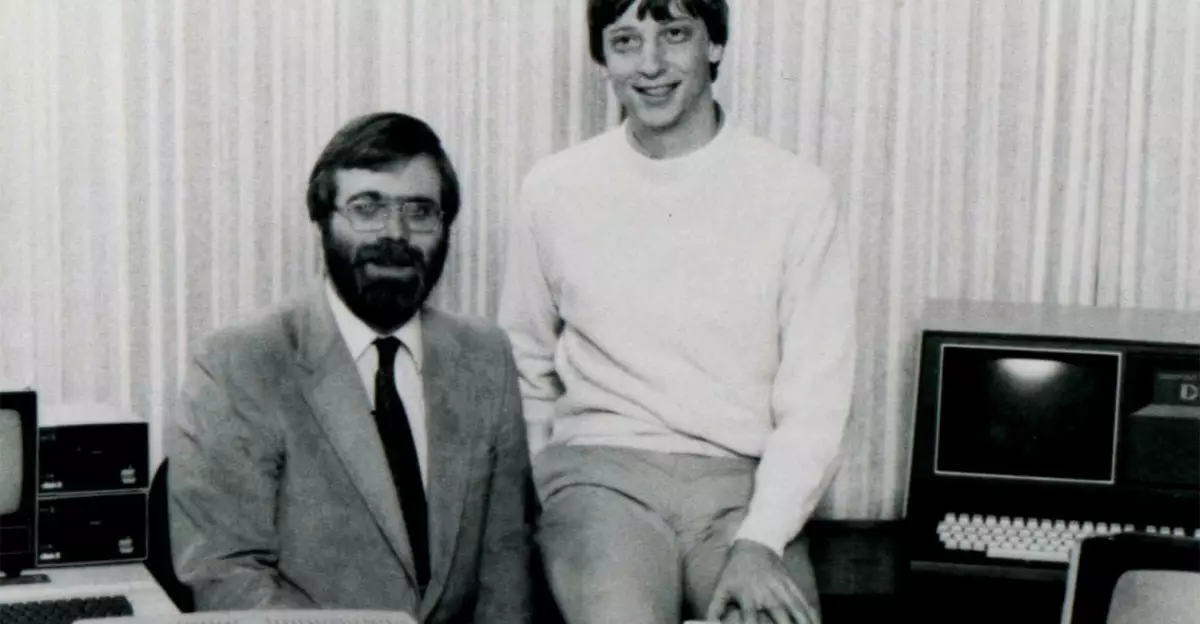In the heart of the digital revolution, Microsoft emerged as a formidable force, pioneering the software landscape since its inception in 1975. Bill Gates and Paul Allen, the visionary founders, strategically crafted the company to meet the burgeoning need for software tailored to early personal computers, such as the Altair 8800. This bold endeavor represented the beginning of what would become a software empire—a journey starting with a mere $16,000 investment for Altair BASIC that would ultimately redefine technology and business.
Microsoft’s initial foray set the foundation for its symbiotic relationship with IBM, leading to the creation of MS-DOS in 1980. This operating system quickly became synonymous with IBM-compatible PCs. The business arrangement proved mutually beneficial, establishing Microsoft as a reputable supplier in the industry. Their approach to software development was not solely about function but also about accessibility, laying the groundwork for an ambitious goal: a computer on every desk and in every home. This vision catalyzed the expansion of Microsoft’s product lineup, forever altering how consumers interacted with technology.
The Transformational Leap: Windows Revolution
The launch of Windows 1.0 in 1985 marked a significant turning point, transitioning users from the rudimentary command-line interface of MS-DOS to a more user-friendly graphical user interface (GUI). The evolution of Windows culminated in the groundbreaking release of Windows 95, an event that captured the public’s attention and enthusiasm. The midnight launch created a palpable excitement, reminiscent of major software releases today, and cemented Windows as a household name. Windows 95 offered features that became staples—like the Start menu, taskbar, and plug-and-play functionality—that changed how users interacted with their PCs and set the standard for future operating systems.
Windows wasn’t just a product; it was a cultural phenomenon. The anticipation surrounding the launch symbolizes how integral Microsoft’s innovations became in everyday life. Unlike its contemporaries, Microsoft showed an uncanny ability to adapt and grow alongside emerging technology trends, offering consumers not just products, but an ecosystem that fostered productivity through its Office suite, which began its journey on the Mac but soon became a cornerstone of Windows.
Branching Out: Embracing Diversity and Innovation
As Microsoft grew, it exhibited ingenuity by venturing into new territories. In 2001, the introduction of the Xbox marked a strategic diversification into the gaming industry, proving that Microsoft could thrive beyond software. The gaming console not only showcased the company’s technical prowess but also built a devoted community of gamers, emphasizing the importance of entertainment in Microsoft’s overarching strategy.
Further diversifying its portfolio, Microsoft launched the Azure cloud platform in 2008, signalling a bold bet on the future of cloud computing and enterprise solutions. By focusing on scaling and flexibility, Azure forestalled competitors and established Microsoft as a top player in cloud services. Additionally, the introduction of Bing in 2009 illustrated a willingness to experiment in online services and search engines, although this effort has occasionally drawn scrutiny regarding its competitiveness against juggernauts like Google.
Not one to shy away from hardware, Microsoft kept pace with technology trends through the Surface line, which debuted in 2012. The Surface series illustrated a shift towards hybrid devices that blend traditional PC functionality with tablet convenience, reflecting Microsoft’s vision for a new computing experience. With Surface, Microsoft not only pushed boundaries in design and capability but also positioned itself as a serious competitor in the hardware arena.
Future Horizons: The AI Paradigm
Today, as Microsoft celebrates five decades of technological evolution, it stands on the threshold of another seismic transformation—artificial intelligence. Underlying this shift is a profound commitment to integrate machine learning capabilities across its vast product ecosystem. The rollout of AI-driven features, such as Copilot, could redefine user engagement and productivity within Windows and Office, enhancing collaboration and decision-making.
Microsoft’s ambitious journey over the last 50 years is a testament to its adaptability and vision. The company hasn’t merely followed technological trends but has often set them, continually pushing boundaries to create products that are not just functional but transformational. Its relentless pursuit of innovation positions Microsoft at the forefront of a digital future that promises to be as dynamic and impactful as its storied past. The next chapter in Microsoft’s narrative appears poised to intertwine deeply with AI—a nexus that could redefine not just the company but the very fabric of work, play, and connectivity in the years to come.

